Here's a a possible way. In short, these are the step you'd perform:
- create a combined grammar that will generate the lexer and parser;
- mix AST rewrite rules in the grammar from (1) to transform the flat list of tokens into a proper tree;
- write a tree grammar that can walk the tree from (2);
- mix custom code inside your tree walker;
- test it.
1
Let's create a small expression parser supporting +, -, *, /, (...) and numbers, which could look like:
grammar Exp; // file: Exp.g
eval
: exp EOF
;
exp
: addExp
;
addExp
: mulExp ((Add | Sub) mulExp)*
;
mulExp
: unaryExp ((Mul | Div) unaryExp)*
;
unaryExp
: Sub atom
| atom
;
atom
: Number
| '(' exp ')'
;
Add : '+';
Sub : '-';
Mul : '*';
Div : '/';
Number : '0'..'9'+;
Space : ' ' {skip();};
2
Including rewrite rules, it will look like:
grammar Exp; // file: Exp.g
options {
output=AST;
}
tokens {
U_SUB;
}
eval
: exp EOF -> exp
;
exp
: addExp
;
addExp
: mulExp ((Add | Sub)^ mulExp)*
;
mulExp
: unaryExp ((Mul | Div)^ unaryExp)*
;
unaryExp
: Sub atom -> ^(U_SUB atom)
| atom
;
atom
: Number
| '(' exp ')' -> exp
;
Add : '+';
Sub : '-';
Mul : '*';
Div : '/';
Number : '0'..'9'+;
Space : ' ' {skip();};
Now an expression like 10 - 2 * (3 + 8) will be transformed to:

3
To create a tree grammar that generates an iterator for the AST generated in (2), you'd do something like this:
tree grammar ExpWalker; // file: ExpWalker.g
options {
tokenVocab=Exp; // use the tokens from Exp.g
ASTLabelType=CommonTree;
}
eval
: exp
;
exp
: ^(Add exp exp)
| ^(Sub exp exp)
| ^(Mul exp exp)
| ^(Div exp exp)
| ^(U_SUB exp)
| Number
;
4
And to mix your custom classes in this tree iterator, do something like this:
tree grammar ExpWalker; // file: ExpWalker.g
options {
tokenVocab=Exp; // use the tokens from Exp.g
ASTLabelType=CommonTree;
}
eval returns [ExpNode e]
: exp {e = $exp.e;}
;
exp returns [ExpNode e]
: ^(Add a=exp b=exp) {e = new AddExp($a.e, $b.e);}
| ^(Sub a=exp b=exp) {e = new SubExp($a.e, $b.e);}
| ^(Mul a=exp b=exp) {e = new MulExp($a.e, $b.e);}
| ^(Div a=exp b=exp) {e = new DivExp($a.e, $b.e);}
| ^(U_SUB a=exp) {e = new UnaryExp($a.e);}
| Number {e = new NumberExp($Number.text);}
;
5
Here's some code to test all classes (stick it all just in one file: Main.java):
import org.antlr.runtime.*;
import org.antlr.runtime.tree.*;
import org.antlr.stringtemplate.*;
public class Main {
public static void main(String[] args) throws Exception {
String source = "10 - 2 * (3 + 8)";
ExpLexer lexer = new ExpLexer(new ANTLRStringStream(source));
CommonTokenStream tokens = new CommonTokenStream(lexer);
ExpParser parser = new ExpParser(tokens);
ExpParser.eval_return returnValue = parser.eval();
CommonTree tree = (CommonTree)returnValue.getTree();
CommonTreeNodeStream nodes = new CommonTreeNodeStream(tree);
ExpWalker walker = new ExpWalker(nodes);
ExpNode root = walker.eval();
System.out.println(source + " = " + root.evaluate());
}
}
interface ExpNode {
double evaluate();
}
class NumberExp implements ExpNode {
final double num;
NumberExp(String s) {
num = Double.parseDouble(s);
}
@Override
public double evaluate() {
return num;
}
}
class AddExp implements ExpNode {
final ExpNode left, right;
AddExp(ExpNode a, ExpNode b) {
left = a;
right = b;
}
@Override
public double evaluate() {
return left.evaluate() + right.evaluate();
}
}
class SubExp implements ExpNode {
final ExpNode left, right;
SubExp(ExpNode a, ExpNode b) {
left = a;
right = b;
}
@Override
public double evaluate() {
return left.evaluate() - right.evaluate();
}
}
class MulExp implements ExpNode {
final ExpNode left, right;
MulExp(ExpNode a, ExpNode b) {
left = a;
right = b;
}
@Override
public double evaluate() {
return left.evaluate() * right.evaluate();
}
}
class DivExp implements ExpNode {
final ExpNode left, right;
DivExp(ExpNode a, ExpNode b) {
left = a;
right = b;
}
@Override
public double evaluate() {
return left.evaluate() / right.evaluate();
}
}
class UnaryExp implements ExpNode {
final ExpNode exp;
UnaryExp(ExpNode e) {
exp = e;
}
@Override
public double evaluate() {
return -exp.evaluate();
}
}
and then do:
# generate a lexer & parser
java -cp antlr-3.2.jar org.antlr.Tool Exp.g
# generate the tree walker
java -cp antlr-3.2.jar org.antlr.Tool ExpWalker.g
# compile everything
javac -cp antlr-3.2.jar *.java
# run the main class
java -cp .:antlr-3.2.jar Main # *nix
java -cp .;antlr-3.2.jar Main # Windows
which prints:
10 - 2 * (3 + 8) = -12.0
You could skip the tree-walker and mix all the code and returns [...] inside your combined grammar, but IMO, a tree grammar keeps things more orderly because the lexer rules, and tokens like ( and ) etc. are removed from it.
HTH
